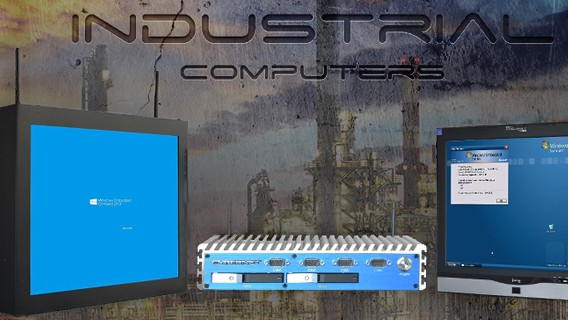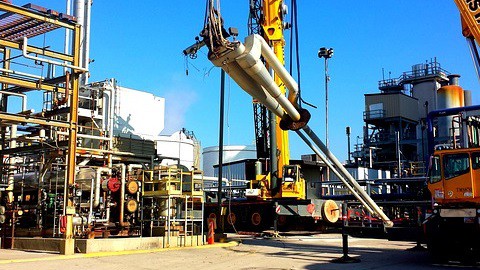As it has on every other industry, the COVID-19 pandemic has had a marked impact on the Oil and Gas Industry. Already trending downward before the virus, worldwide public health lockdowns caused oil consumption to shrink dramatically. Nevertheless, despite ongoing mass vaccination efforts and a global push to restart the global economy, demand is not expected to return to its pre-pandemic levels for quite some time, if at all.
With all of the headwinds it faces, the oil and gas industry needs to adapt to survive the 21st Century. Enter Industry 4.0. By leveraging advancements in digital technology, rugged industrial PCs, and wireless connectivity, the industry can increase efficiency and maintain solvency as supply, demand, and margins shrink.
What is Industry 4.0
Article Guide
The fourth industrial revolution, or Industry 4.0, refers to the deployment of digital technology (such as the Internet of Things sensors, Industrial PCs, Big Data Analysis and Visualization, edge and cloud computing, and wireless data transfer) to foster self-optimization across entire supply chains. Constant data collection and analysis across every link in the supply chain, from resource extraction to end-user purchase, allows industries to maximize efficiency with a level of control previously impossible.
At its core, Industry 4.0 represents the fusion of the physical and digital worlds within the industrial field. Though still in its infancy, it has already caused a seismic shift in manufacturing and other industries. It is only a matter of time before the Oil and Gas Industry taps into the exciting potential Industry 4.0 has to offer.
Industry Troubles Incentivize Change
Even before the pandemic, the oil industry was facing a grim future. Increasing competition from renewables had eaten into demand. Shrinking oil supply means the remaining oil is harder to find and more expensive to extract. Environmental concerns related to climate change, fracking, oil storage, and transportation were causing governments worldwide to scrutinize the industry and had raised the specter of costly new regulations. Labor shortages, caused by negative public attitudes towards the industry and the increasingly specialized skill sets demanded by new technology, forced the industry to raise wages, increasing labor costs.
Then COVID-19 hit. Economies across the world shut down one by one as governments attempted to contain the virus’s spread. Workplaces everywhere closed as public health officials ordered people to stay in their homes. Travel restrictions meant airlines were essentially grounded. The resulting economic downturn led to decreasing consumer demand across the board, which meant fewer goods would need to be shipped.
In short, it was a nightmare scenario for the oil and gas industry. Demand decreased precipitously, and the industry still has yet to recover. With the demand shock of COVID-19 and looming troubles on the horizon, how will the oil industry survive in the coming decades? By getting Smart.
Upstream
The oil and gas industry is generally divided into three sectors: Upstream, Midstream, and Downstream. Upstream refers to everything related to the exploration and extraction of oil and natural gas deposits. Midstream refers to the transportation and storage of oil and gas once it has been extracted. Downstream refers to the refinement of oil into petrochemical and the distribution of the resulting products to consumers. Each sector presents unique challenges as well as potential opportunities for optimization within an Industry 4.0 framework.
Exploration
Oil exploration is already deeply dependant on digital technology. However, the seismic models used to find oil deposits are dependant on a static data set. By integrating real-time production data collected by IoT sensors embedded at production sites, exploration companies can create dynamic 4d models to map changes in oil reserve levels over time.
Extraction
While oil exploration had already gone through a digital transformation before Industry 4.0, digitization will truly revolutionize the oil extraction process. Drones equipped with high-resolution smart cameras afford oil rig operators a birds-eye view of any drilling site. Their maneuverability and small size mean they can access otherwise inaccessible parts of a rig with relative ease. In particular, at many offshore sites, using drones in this way could mean the difference between life and death for oil rig workers.
Automated drilling equipment embedded with smart sensors can collect valuable data bout extraction efforts. This data can be fed into a digital twin – a digital duplicate of the rig itself – giving rig operators a virtual representation of precisely what is happening with their rig at any given moment.
Big data analysis and visualization, combined with Industrial HMI Panels mounted safely around the rig, allows workers to view that data and make mission-critical decisions in real-time. Additionally, the tempered touch glass found on Industrial Panel PCs means they can withstand the various hazards present at every drilling site.
Midstream
Transporting oil and gas is both dangerous and costly, and much can go wrong in the process. Pipelines and storage tanks can leak, tankers can crash, natural gas can explode in transit. Furthermore, the sheer distances oil must travel makes constant monitoring nearly impossible.
Naturally, these mistakes are very costly, and with the challenging future facing the industry as a whole, midstream service providers are looking for any way to mitigate these risks that they can. While Industry 4.0 will not eliminate all of these problems, it will make them easier to detect and manage.
There are 2.4 million miles of pipelines in the United States alone. Manually monitoring the entire network is logistically and financially impossible. As with upstream oil, drones can help midstream service providers inspect hard-to-reach areas safely and cheaply. Drones equipped with cameras and thermal sensors can detect things like gas leaks and physical damage in remote locations well before a person could be dispatched to assess the situation. Upon arrival, the worker can use a Rugged Industrial Tablet with built-in 5G capabilities to receive and transmit data about their progress to the central control facility wirelessly.
Not all oil is transported by pipeline. GPS sensors installed on oil tankers can provide real-time location data of all their assets. Other smart sensors that detect temperature and vibration can be used to minimize the risk of train derailments. Similar sensors can monitor oil levels at storage facilities, making it easier for midstream oil service providers to track their inventory and maintain efficient operations.
Downstream
Digitization in downstream oil can significantly enhance the oil refining process’s safety and allow refineries to respond to fluctuations in demand with agility, all while reducing costs and increasing output. Intelligent pressure and temperature sensors installed around a refinery can feed data to a single edge computing system that controls the entire operation, minimizing labor needs and taking important safety decisions out of human hands.
On the distribution end, gasoline tankers retrofitted with wireless sensors can help with digital inventory management. Predictive analytics can take this data and forecast future demand with greater accuracy than had previously been possible. In turn, these forecasts can be used to help automate production levels, allowing refiners to ramp up supply when demand spikes and ramp it down when it falls.
Final Thoughts
Though the oil industry is far from tapping the full potential of Industry 4.0, COVID-19 has only hastened the inevitable. To see how Industrial Computers and Tablets can help you enter this exciting world of digital oil, contact the experts at Cybernet Today.
Industrial Computing: Changes in the Oil and Gas Industry
September 8, 2015
The field of industrial computing has evolved to such a degree that the devices that are currently available transform the very industries that they are deployed in. There are a number of computers suitable for a…
0 Comments6 Minutes
Industrial Computer Selection Criteria for the Oil and Gas Industry
March 10, 2016
Technological advancements have led us to areas we have never had access to before, such as horizontal drilling in the Bakken region. Conventional drilling techniques have only been able to extract a fraction of the…
0 Comments7 Minutes
You Can't
Learn from a Pop-up
But we can deliver knowledge to your inbox!
We dive deep in the industry looking for new trends, technology, news, and updates. We're happy to share them with you.
Knowledge, News, and Industry Updates Right in Your Inbox




